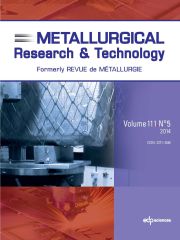Article contents
The “Cost Tool”: operating and capital costs ofexisting and breakthrough routes in a future studiesframework
Published online by Cambridge University Press: 29 September 2009
Abstract
The “cost tool” is a model that calculates the CAPEX & OPEXof the ULCOS routes. Along with the “CO2 tool”, it providesone of the key elements necessary for selecting the bestroutes: it was used for decision making when the programmoved from phase I, where 80 different routes whereunder investigation, to phase II, where 5 routes only arestudied further; it now provides updated information on theon-going routes of the last phases of the program. OPEX arecalculated by an extension of the CO2 tool, based on plantby plant simulation of the flow sheet, and CAPEX result fromthe concepts provided by the line SPs scaled by standardchemical engineering design rules. The tool is embedded in asophisticated futures studies framework, using the same longterm(2050) scenarios as the economic modeling of energyfutures carried out by LEPII [E. Bellevrat, P. Menanteau - Scenarios and economic mod-eling, Proceedings, ULCOS-4, Essen, October 2008.], which assumes a series offutures ranging from mild to strong CO2 constraint. This givesan unusual vision of when and how the CO2 externalitywill be internalized in the economy. Indeed, as claimedby the Steel Industry, the existing process routes are veryefficient and, therefore, in the context of prices encounteredsince 2000, there are not any no-regret ULCOS routes. Theselection of ULCOS routes has been carried out in coherencewith the tool conclusions, although other, non-model basedconsiderations have also been taken on board.
- Type
- Research Article
- Information
- Metallurgical Research & Technology , Volume 106 , Issue 9: Selected papers from 4th ULCOS SEMINAR (Part 1) , September 2009 , pp. 337 - 349
- Copyright
- © La Revue de Métallurgie, 2009
- 11
- Cited by


